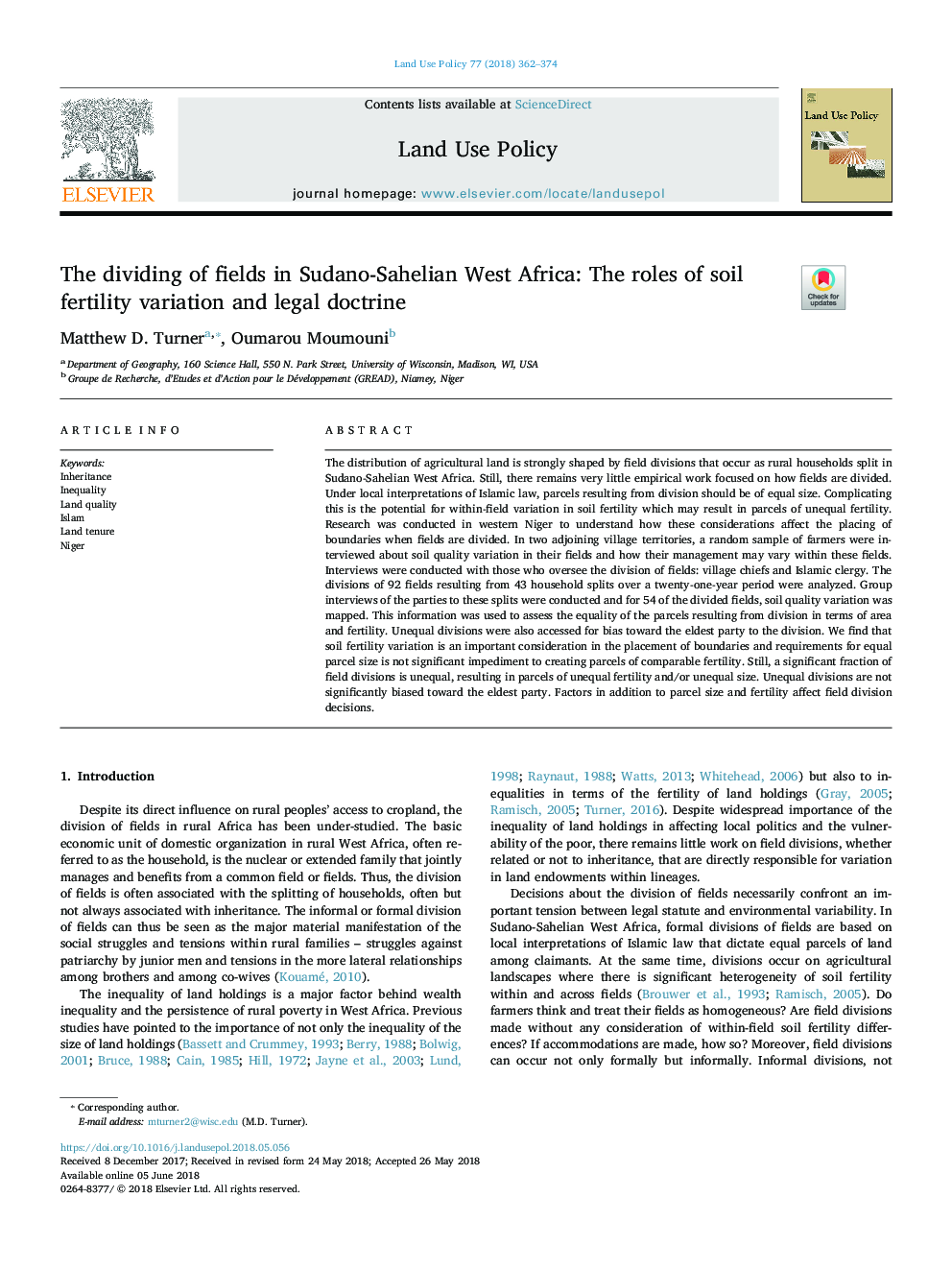| Article ID | Journal | Published Year | Pages | File Type |
|---|---|---|---|---|
| 6546157 | Land Use Policy | 2018 | 13 Pages |
Abstract
The distribution of agricultural land is strongly shaped by field divisions that occur as rural households split in Sudano-Sahelian West Africa. Still, there remains very little empirical work focused on how fields are divided. Under local interpretations of Islamic law, parcels resulting from division should be of equal size. Complicating this is the potential for within-field variation in soil fertility which may result in parcels of unequal fertility. Research was conducted in western Niger to understand how these considerations affect the placing of boundaries when fields are divided. In two adjoining village territories, a random sample of farmers were interviewed about soil quality variation in their fields and how their management may vary within these fields. Interviews were conducted with those who oversee the division of fields: village chiefs and Islamic clergy. The divisions of 92 fields resulting from 43 household splits over a twenty-one-year period were analyzed. Group interviews of the parties to these splits were conducted and for 54 of the divided fields, soil quality variation was mapped. This information was used to assess the equality of the parcels resulting from division in terms of area and fertility. Unequal divisions were also accessed for bias toward the eldest party to the division. We find that soil fertility variation is an important consideration in the placement of boundaries and requirements for equal parcel size is not significant impediment to creating parcels of comparable fertility. Still, a significant fraction of field divisions is unequal, resulting in parcels of unequal fertility and/or unequal size. Unequal divisions are not significantly biased toward the eldest party. Factors in addition to parcel size and fertility affect field division decisions.
Related Topics
Life Sciences
Agricultural and Biological Sciences
Forestry
Authors
Matthew D. Turner, Oumarou Moumouni,
